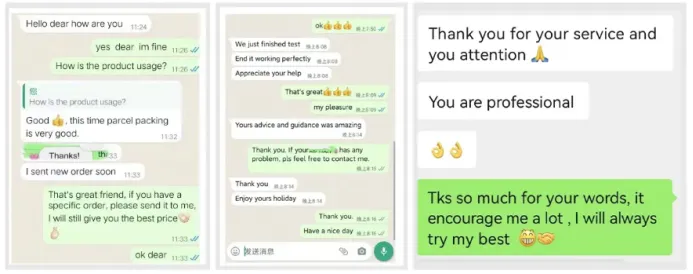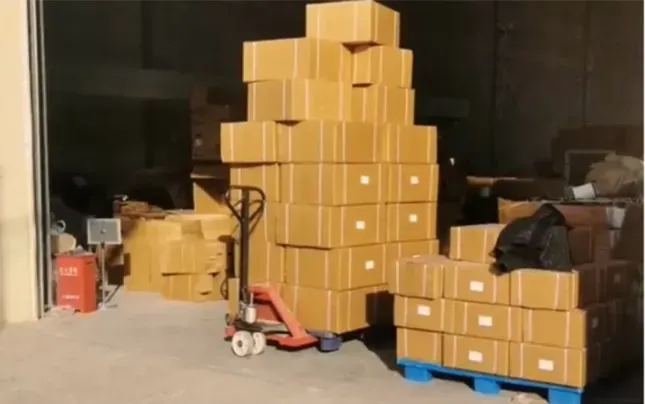
-
 Afrikaans
Afrikaans -
 Albanian
Albanian -
 Amharic
Amharic -
 Arabic
Arabic -
 Armenian
Armenian -
 Azerbaijani
Azerbaijani -
 Basque
Basque -
 Belarusian
Belarusian -
 Bengali
Bengali -
 Bosnian
Bosnian -
 Bulgarian
Bulgarian -
 Catalan
Catalan -
 Cebuano
Cebuano -
 Corsican
Corsican -
 Croatian
Croatian -
 Czech
Czech -
 Danish
Danish -
 Dutch
Dutch -
 English
English -
 Esperanto
Esperanto -
 Estonian
Estonian -
 Finnish
Finnish -
 French
French -
 Frisian
Frisian -
 Galician
Galician -
 Georgian
Georgian -
 German
German -
 Greek
Greek -
 Gujarati
Gujarati -
 Haitian Creole
Haitian Creole -
 hausa
hausa -
 hawaiian
hawaiian -
 Hebrew
Hebrew -
 Hindi
Hindi -
 Miao
Miao -
 Hungarian
Hungarian -
 Icelandic
Icelandic -
 igbo
igbo -
 Indonesian
Indonesian -
 irish
irish -
 Italian
Italian -
 Japanese
Japanese -
 Javanese
Javanese -
 Kannada
Kannada -
 kazakh
kazakh -
 Khmer
Khmer -
 Rwandese
Rwandese -
 Korean
Korean -
 Kurdish
Kurdish -
 Kyrgyz
Kyrgyz -
 Lao
Lao -
 Latin
Latin -
 Latvian
Latvian -
 Lithuanian
Lithuanian -
 Luxembourgish
Luxembourgish -
 Macedonian
Macedonian -
 Malgashi
Malgashi -
 Malay
Malay -
 Malayalam
Malayalam -
 Maltese
Maltese -
 Maori
Maori -
 Marathi
Marathi -
 Mongolian
Mongolian -
 Myanmar
Myanmar -
 Nepali
Nepali -
 Norwegian
Norwegian -
 Norwegian
Norwegian -
 Occitan
Occitan -
 Pashto
Pashto -
 Persian
Persian -
 Polish
Polish -
 Portuguese
Portuguese -
 Punjabi
Punjabi -
 Romanian
Romanian -
 Russian
Russian -
 Samoan
Samoan -
 Scottish Gaelic
Scottish Gaelic -
 Serbian
Serbian -
 Sesotho
Sesotho -
 Shona
Shona -
 Sindhi
Sindhi -
 Sinhala
Sinhala -
 Slovak
Slovak -
 Slovenian
Slovenian -
 Somali
Somali -
 Spanish
Spanish -
 Sundanese
Sundanese -
 Swahili
Swahili -
 Swedish
Swedish -
 Tagalog
Tagalog -
 Tajik
Tajik -
 Tamil
Tamil -
 Tatar
Tatar -
 Telugu
Telugu -
 Thai
Thai -
 Turkish
Turkish -
 Turkmen
Turkmen -
 Ukrainian
Ukrainian -
 Urdu
Urdu -
 Uighur
Uighur -
 Uzbek
Uzbek -
 Vietnamese
Vietnamese -
 Welsh
Welsh -
 Bantu
Bantu -
 Yiddish
Yiddish -
 Yoruba
Yoruba -
 Zulu
Zulu
Affordable Control Arms Cost - Best Prices & Savings
- The Real Cost of Control Arms: Safety and Performance Factors
- Engineering Innovations That Cut Long-Term Expenses
- Market Analysis: Top Control Arm Manufacturers Compared
- Custom Solutions for Complex Vehicle Requirements
- Case Studies: Effective Control Arm Replacement in Action
- Unlocking Value: The Economic Advantages of Premium Control Arms
- Strategic Approaches to Lower Control Arm Cost and Bent Arm Prevention

(control arms cost)
The Real Cost of Control Arms: Safety and Performance Factors
Control arms form the critical connection between your vehicle's suspension and frame. Compromised units directly impact alignment stability - a bent control arm causes irregular tire wear within 500-1,000 miles. Average repair bills jump 45% when suspension damage affects adjacent components. Industry data reveals 22% of suspension-related accidents stem from failed control arms, with average collision repair costs exceeding $3,200. Premature replacement saves $800-$1,200 versus system-wide repairs.
Material selection dictates durability and replacement frequency. While stamped steel arms cost $65-$110, they show fatigue after 70,000 miles. Forged aluminum alternatives ($120-$190) withstand 130,000+ miles despite higher initial cost. Rubber bushings last 2-3 years in harsh conditions, whereas polyurethane versions ($15-$35 upgrade) endure 5+ years, reducing labor frequency.
Engineering Innovations That Cut Long-Term Expenses
Hydroforming technology revolutionizes control arm design. These pressurized tube arms maintain OEM strength while weighing 35% less than stamped steel equivalents. Reduced mass decreases kinetic stress on ball joints, extending service intervals by 40%. Precision CNC machining creates integrated grease channels preventing premature bushing failure, eliminating 85% of squeaking complaints common in economy parts.
Core innovations focus on failure resistance. Reinforced pivot points withstand impact forces exceeding standard specifications by 200%. Zinc-nickel electroplating provides 500+ salt spray hours versus 96 hours for basic zinc coating - crucial longevity in northern climates. Advanced rubber compounding maintains flexibility at -40°F while resisting oil degradation, preserving alignment integrity.
Market Analysis: Top Control Arm Manufacturers Compared
| Manufacturer | Standard Arm Cost | Premium Arm Cost | Warranty | Failure Rate | Specialized Options |
|---|---|---|---|---|---|
| OEM | $215-$380 | $290-$420 | 1 year | 8% | None |
| Mevotech | $85-$155 | N/A | 3 years | 22% | Heavy-duty bushings |
| MOOG | $110-$195 | $175-$260 | Lifetime | 14% | Problem Solver series |
| ACDelco | $130-$225 | $200-$310 | 3 years | 11% | GM-specific designs |
| TRW | $190-$280 | $245-$350 | 5 years | 6% | Motorsport variants |
Industry failure statistics reveal significant quality variations. While bargain arms seem attractive, their 22% failure rate within 18 months negates initial savings. Premium brands like TRW maintain under 10% failure rates despite high-mileage use, with patented bushing designs that outperform competitors by 60,000 miles on average.
Custom Solutions for Complex Vehicle Requirements
Lifted trucks experience control arm stress increases up to 300% over stock. Custom tubular arms combat this with laser-cut gussets reinforcing high-stress zones. Rotational adjustment slots allow +6° alignment correction versus static factory units - critical for preventing irregular tire wear patterns when running oversized tires.
Heavy-duty ball joints rated for 5,500 lbs replace standard 2,800 lb units on construction fleet vehicles. Press-fit sleeves upgrade old mounting points to accept modern cartridge-style joints, converting outdated designs to serviceable systems. Such modifications extend service intervals from 15,000 to 45,000 miles in gravel pit operations.
Case Studies: Effective Control Arm Replacement in Action
Denver's Rocky Mountain Taxi fleet documented suspension repair reductions after switching to premium control arms. Previously replacing economy arms every 8-10 months ($135 parts + $220 labor), they shifted to TRW units with lifetime warranties. After three years, replacements dropped to 21 units from 48 historically while alignment corrections decreased 73%.
A Michigan snowplow operator using Mevotech components faced 10 bent control arms annually at $285 per incident. After installing custom-forged units with 10° bending resistance, costs dropped 92% over two seasons. Reinforced pivots prevented deformation from ice berm impacts, saving $11,400 annually versus budget replacements.
Unlocking Value: The Economic Advantages of Premium Control Arms
Longevity metrics demonstrate hidden savings. A $190 premium arm lasts 130,000 miles versus $75 economy parts requiring replacement at 40,000 miles. Factoring installation costs ($185 average), the economical choice costs $555 per 130,000 miles while premium solutions run $375 - a 32% saving despite higher initial price.
Residual value impacts emerge in vehicle resale. Well-maintained suspension preserves alignment specifications. Dealerships report $400-$700 higher trade values for vehicles with documented premium suspension maintenance. Certified pre-owned programs mandate OEM or equivalent arms - critical for lease returns.
Strategic Approaches to Lower Control Arm Cost and Bent Arm Prevention
Proactive maintenance identifies bend precursors like accelerated inner tire wear. Laser alignment checks every 12,500 miles detect sub-2° misalignment indicative of emerging arm issues. This $35 service prevents $600+ repair scenarios through early intervention. Applying anti-corrosion coatings every oil change shields vulnerable joints, extending northern climate lifespans by 30%.
Road impact management preserves integrity. Negotiating speed bumps above 8 mph generates impact forces comparable to curbing a wheel. Off-road drivers benefit from skid plates deflecting debris 74% more effectively than exposed arms. Winter drivers should avoid hardened snow piles - 3" accumulation causes bent arm impacts equivalent to hitting barriers at 15 mph.

(control arms cost)
FAQS on control arms cost
Q: What affects control arms cost?
A: Control arms cost varies by vehicle make, material (steel/aluminum), and brand. Aftermarket parts typically cost $50-$150 per arm while OEM parts reach $200-$400. Labor adds $150-$350 depending on mechanic rates.
Q: What determines lower control arm cost?
A: Lower control arm cost depends on suspension type and manufacturing complexity. Standard sedans range $60-$250 per arm, while luxury/performance models cost $300-$600. Installation complexity in certain vehicles may increase labor fees.
Q: Why does bent control arm cost differ from replacement?
A: Bent control arm cost includes alignment checks and potential companion part damage. Replacement arms cost $80-$400, but related repairs (ball joints, wheel hubs) can add $200-$1000. Severe bends often require immediate replacement for safety.
Q: How does front vs rear control arm cost compare?
A: Front control arms typically cost more ($80-$400 each) due to steering components. Rear control arms cost $60-$300 with simpler designs. Both locations require similar labor time (1-3 hours), making part prices the main difference.
Q: Can control arm cost indicate quality?
A: Higher control arm cost often reflects durable materials like forged steel or reinforced bushings. Premium brands (Moog, TRW) charge $120-$450 for extended warranties and rigorous testing. Avoid ultra-cheap arms ($40-$80) as they compromise safety.
-

 English
English
 Afrikaans
Afrikaans
 Albanian
Albanian
 Amharic
Amharic
 Arabic
Arabic
 Armenian
Armenian
 Azerbaijani
Azerbaijani
 Basque
Basque
 Belarusian
Belarusian
 Bengali
Bengali
 Bosnian
Bosnian
 Bulgarian
Bulgarian
 Catalan
Catalan
 Cebuano
Cebuano
 Corsican
Corsican
 Croatian
Croatian
 Czech
Czech
 Danish
Danish
 Dutch
Dutch
 Esperanto
Esperanto
 Estonian
Estonian
 Finnish
Finnish
 French
French
 Frisian
Frisian
 Galician
Galician
 Georgian
Georgian
 German
German
 Greek
Greek
 Gujarati
Gujarati
 Haitian Creole
Haitian Creole
 Hausa
Hausa
 Hawaiian
Hawaiian
 Hebrew
Hebrew
 Hindi
Hindi
 Miao
Miao
 Hungarian
Hungarian
 Icelandic
Icelandic
 Igbo
Igbo
 Indonesian
Indonesian
 Irish
Irish
 Italian
Italian
 Japanese
Japanese
 Javanese
Javanese
 Kannada
Kannada
 Kazakh
Kazakh
 Khmer
Khmer
 Rwandese
Rwandese
 Korean
Korean
 Kurdish
Kurdish
 Kyrgyz
Kyrgyz
 Lao
Lao
 Latin
Latin
 Latvian
Latvian
 Lithuanian
Lithuanian
 Luxembourgish
Luxembourgish
 Macedonian
Macedonian
 Malgashi
Malgashi
 Malay
Malay
 Malayalam
Malayalam
 Maltese
Maltese
 Maori
Maori
 Marathi
Marathi
 Mongolian
Mongolian
 Myanmar
Myanmar
 Nepali
Nepali
 Norwegian
Norwegian
 Norwegian
Norwegian
 Occitan
Occitan
 Pashto
Pashto
 Persian
Persian
 Polish
Polish
 Portuguese
Portuguese
 Punjabi
Punjabi
 Romanian
Romanian
 Russian
Russian
 Samoan
Samoan
 Scottish Gaelic
Scottish Gaelic
 Serbian
Serbian
 Sesotho
Sesotho
 Shona
Shona
 Sindhi
Sindhi
 Sinhala
Sinhala
 Slovak
Slovak
 Slovenian
Slovenian
 Somali
Somali
 Spanish
Spanish
 Sundanese
Sundanese
 Swahili
Swahili
 Swedish
Swedish
 Tagalog
Tagalog
 Tajik
Tajik
 Tamil
Tamil
 Tatar
Tatar
 Telugu
Telugu
 Turkish
Turkish
 Turkmen
Turkmen
 Ukrainian
Ukrainian
 Urdu
Urdu
 Uighur
Uighur
 Uzbek
Uzbek
 Vietnamese
Vietnamese
 Welsh
Welsh
 Bantu
Bantu
 Yiddish
Yiddish
 Yoruba
Yoruba
 Zulu
Zulu
 Thai
Thai






